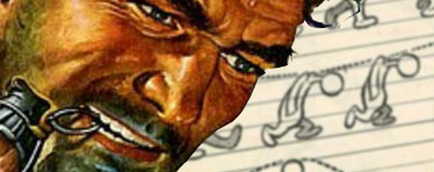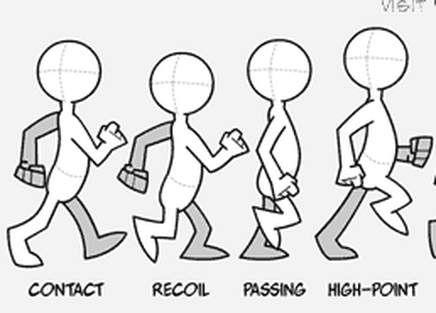Frame Animation
Traditional Animation Resources:
Walk Cycle Depot: Various Walk Cycles
The Ball BounceAnimating a ball bouncing will help you to understand the effects of gravity on a ball. It will also help you to understand how animators use key frames to animate the extremes of different motions, and then follow up with in-betweens.
To get started on how to animate a ball bouncing you will want to thoroughly check out a web page called the Angry Animator. He does a wonderful job af explaining the steps involved in animating a ball bouncing. Click on the image to visit a wonderful and helpful tutorial. Challenge Yourself:If you found creating a ball bouncing to be easy. Try animating different types of balls bouncing. Consider animating a bowling ball bounce, a ping pong ball, a basketball, tennis ball, rubber bouncy ball, or a base ball.
How can you emulate gravity and the quality of squash and stretch when these balls appear when they bounce? |
|
The Walk CycleThe walk cycle is another basic fundamental of learning to animate and create motion. Again, there are several motions involved into a walk cycle but they are broken down into four steps: contact, recoil, passing, high point. A walk cycle includes these four steps for both the right and left foot.
You will create a walk cycle animation using Pencil. Before you dive into Pencil and try to animate away you will probably want to read about the walk cycle, watch some watch cycle animations, and maybe even film your own walk cycle and study how you walk. Again, the Angry Animator has assembled a highly informational page about understanding the walk cycle. View this page by clicking on the image below. Challenge Yourself:Start of simple and learn to animate a basic walk cycle, nothing to outrageous to begin with. If you figure this out, try creating an exaggerated mood into your walk cycle. Animate a person who is angry, tired, tip-toeing, running, skipping, or swaggering.
|
|


